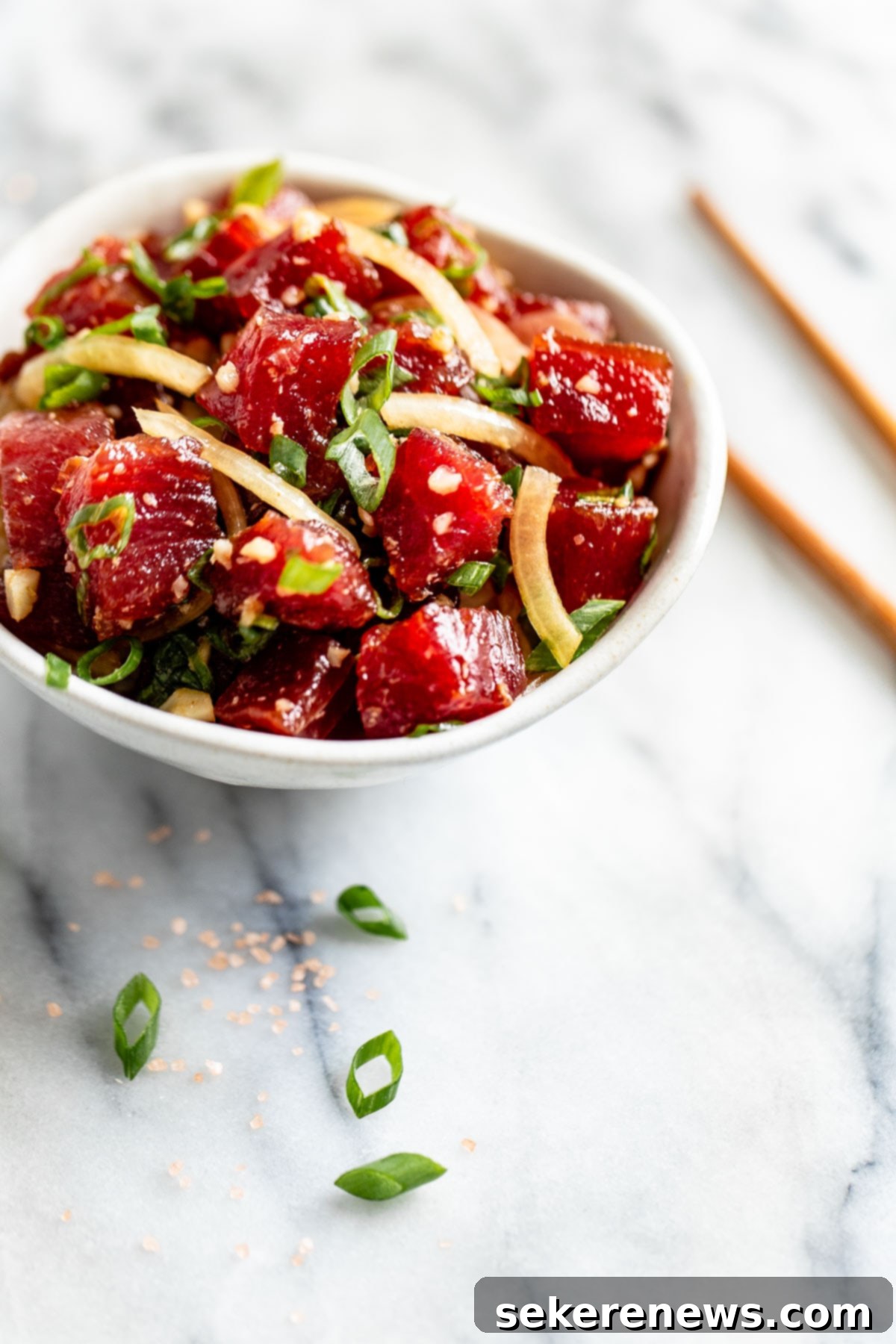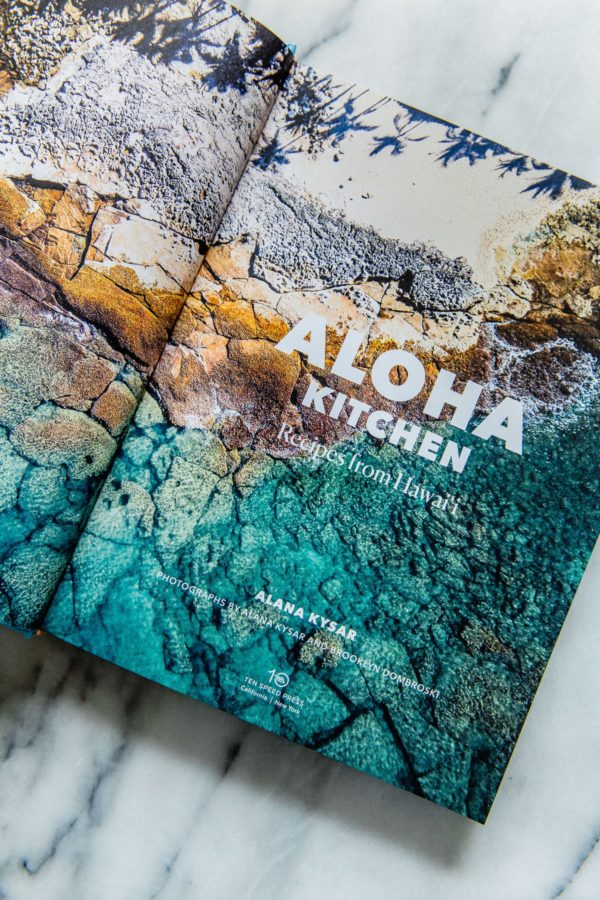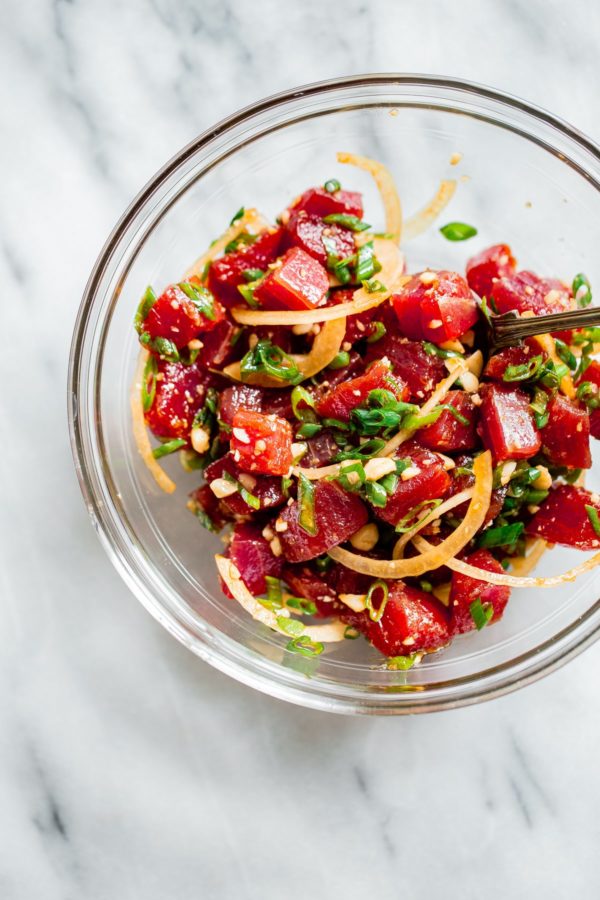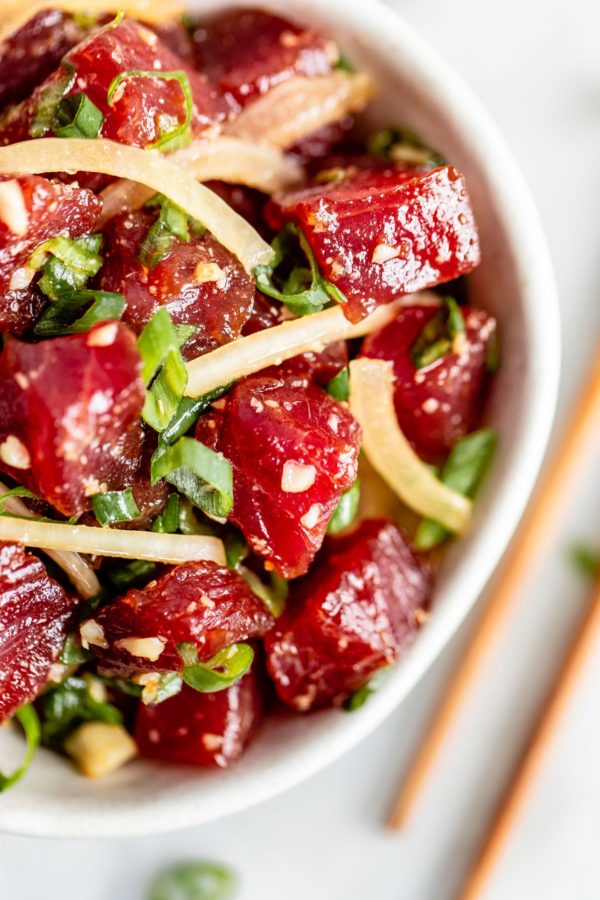Authentic Hawaiian Shoyu Ahi Poke Bowl Recipe: A Taste of the Islands at Home
Embrace the vibrant flavors of Hawaii with this traditional Shoyu Ahi Poke Bowl recipe. Featuring succulent sashimi-grade ahi tuna, crisp sweet onions, savory soy sauce, aromatic sesame oil, crunchy macadamia nuts, and fresh scallions, this dish is a testament to simple, exquisite island cuisine. It’s not just a meal; it’s an experience that brings the spirit of aloha directly to your kitchen.
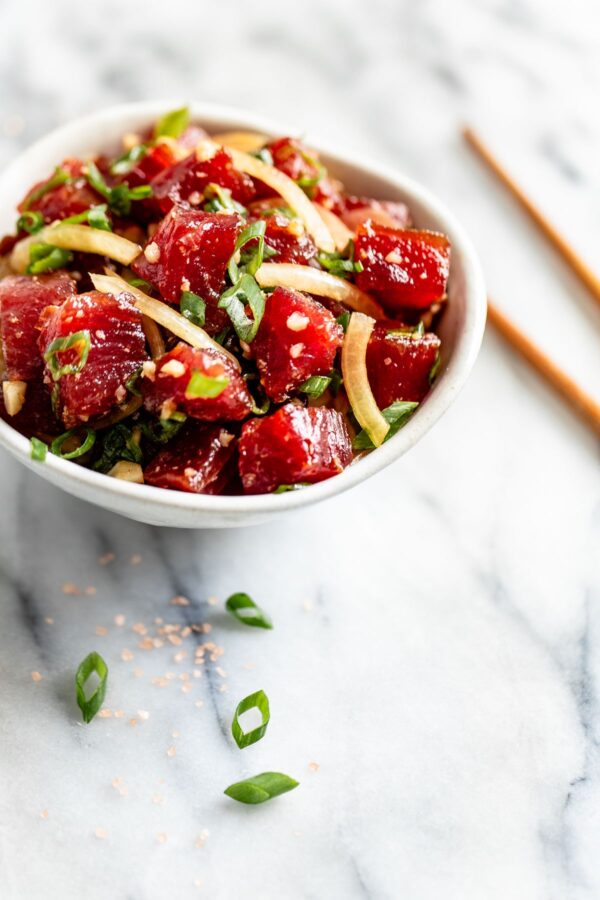
As the days grow longer and the sun warms our surroundings, our culinary desires naturally shift towards lighter, fresher, and more vibrant meals. Here in Chicago, the arrival of warmer weather instantly puts me in “summer mode,” seeking dishes that are not only bursting with flavor but also quick and easy to prepare. This pursuit led me to rediscover my profound love for poke, especially this particular Shoyu Ahi Poke recipe, which effortlessly checks all those boxes and more.
This isn’t just any recipe; it’s a gateway to an unparalleled taste experience. It’s incredibly simple to assemble, undeniably crave-worthy, and perfectly balanced in its flavor profile. For any admirer of raw seafood, particularly tuna, poke holds a special place. And let me tell you, this Shoyu Ahi Poke bowl has truly been the best I’ve encountered to date. If you’re already a poke enthusiast or simply enjoy the delicate taste of raw tuna, prepare to fall in love with this exquisite preparation. It’s a culinary delight that feels like a mini-vacation with every bite!
Why Shoyu Ahi Poke is a Must-Try Meal
Poke is more than just a dish; it’s a celebration of freshness, simplicity, and bold flavors. Its beauty lies in its minimalist approach, allowing the high-quality ingredients to shine. This Shoyu Ahi Poke recipe, in particular, embodies this philosophy, making it an ideal choice for a variety of occasions.
A Culinary Journey to Hawaii
Imagine yourself on a sun-drenched Hawaiian beach, the gentle ocean breeze carrying the scent of salt and tropical blossoms. This Shoyu Ahi Poke has the remarkable ability to transport you there, no plane ticket required. The combination of tender ahi tuna, sweet and pungent onions, umami-rich soy sauce, nutty sesame oil, and crunchy macadamia nuts creates a symphony of textures and tastes that is authentically Hawaiian. It’s a perfect dish for summer gatherings, a light yet satisfying lunch, or an impressive appetizer that requires minimal effort but delivers maximum impact.
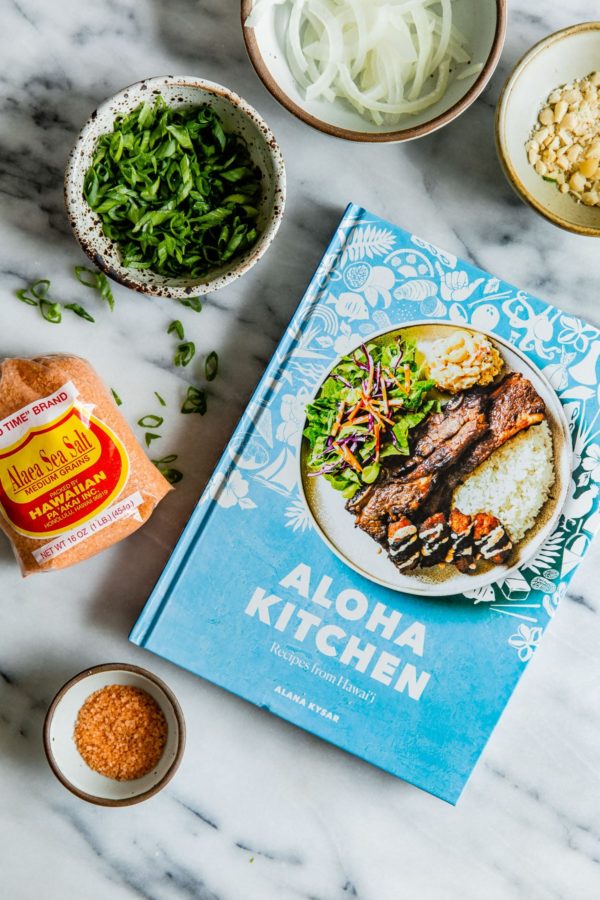
Discovering Aloha Kitchen: A Guide to Authentic Hawaiian Flavors
This exceptional classic ahi poke bowl recipe is graciously shared from the pages of my friend Alana Kysar’s remarkable cookbook, Aloha Kitchen [affiliate link]. This cookbook is more than just a collection of recipes; it’s a beautiful, vibrant celebration of local Hawaiian cuisine and the rich culture that shaped it.
More Than Just a Cookbook
Having grown up in the breathtaking landscapes of Maui, Alana possesses an intimate understanding of Hawaiian food traditions. She masterfully weaves together captivating stories of Hawaiian history and how its unique food culture has evolved, alongside more than 85 authentic recipes for local Hawaiian dishes. Within its pages, you’ll embark on a culinary adventure, discovering everything from savory lumpia and irresistible soy-glazed spam musubi to comforting Shoyu chicken, hearty loco moco, delicate haupia pie, and the delightful guava cake.
From its stunning photography to its thoughtful layout and design, Aloha Kitchen is truly a masterpiece. I confess, my personal experience with authentic local Hawaiian food was limited before this book; I’d only visited Hawaii once, many years ago. This very lack of familiarity, however, is precisely what drew me to Alana’s work. The finest cookbooks possess the power to allow you to experience a culture and a place through its cuisine, and Alana accomplishes this with extraordinary grace in Aloha Kitchen. Be warned, though: a delightful side effect of reading it is an immediate desire to book a vacation to Hawaii!
What Exactly is Poke? A Deep Dive into Hawaiian Tradition
If you’re new to the world of poke (pronounced PO-kay), you’re in for a treat. This iconic Hawaiian dish, served either as a refreshing appetizer or a satisfying main course, traditionally features raw fish. The name “poke” itself offers insight into its preparation, translating simply to ‘to section’ or ‘to slice or cut’ in Hawaiian. This reflects the core technique of dicing fresh fish into bite-sized pieces.
The Evolution of Poke
While modern poke has seen countless creative variations, my personal preference leans towards the simpler, more traditional preparations, much like this recipe, which notably omits mayonnaise-based dressings. Historically, traditional poke was (and often still is) crafted with cubed ahi or yellowfin tuna. These pristine pieces of fish are lightly tossed with a vibrant dressing primarily composed of soy sauce (known as shoyu in Hawaii) and fragrant sesame oil. It’s then typically adorned with fresh raw onion, crisp green onions (scallions), and the delightful crunch of chopped macadamia nuts, creating a harmonious blend of textures and tastes. The beauty of traditional poke lies in its ability to highlight the natural freshness of the fish with minimal embellishment.
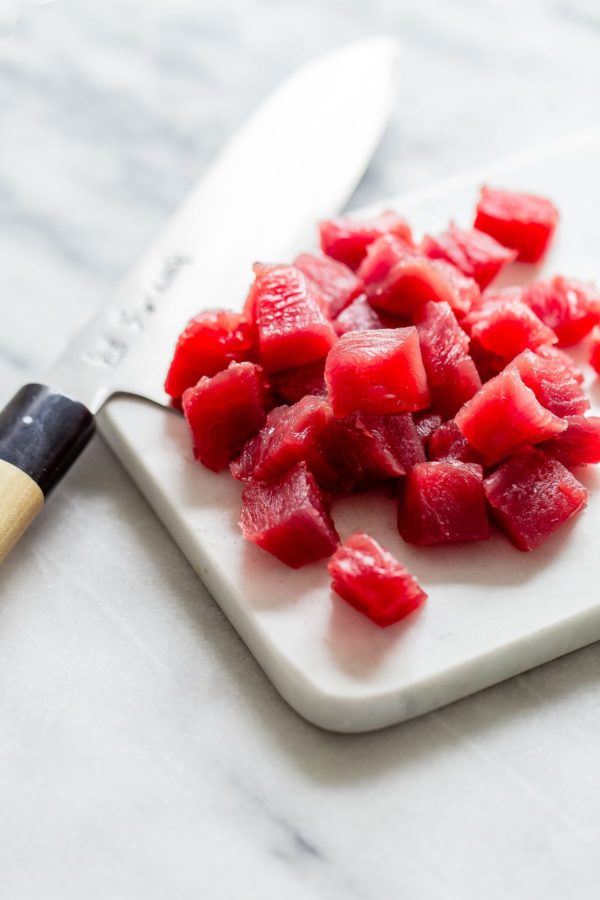
Unpacking the Essential Shoyu Ahi Poke Ingredients
For those who might feel a tad apprehensive about preparing raw fish at home, fret not! I’ve included crucial tips and guidance below to ensure a safe and utterly delicious experience. The secret to an extraordinary Shoyu Ahi Poke lies in the quality and balance of its relatively few, yet powerful, ingredients.
-
The Star: Sashimi-Grade Ahi Tuna
Since you’ll be enjoying raw fish, the absolute paramount concern is sourcing the highest-quality ahi or yellowfin tuna possible. This is non-negotiable. Always, and I mean always, procure your fish from the most reputable seafood market available to you. If you can’t guarantee top-tier freshness, it’s best to opt for another dish entirely. Tuna suitable for raw consumption is often labeled “sashimi-grade” or “sushi-grade.” While these aren’t officially regulated terms, they generally indicate cuts of tuna that are handled with extreme care and deemed safe for raw preparations. Don’t hesitate to inform your fishmonger that you’re preparing poke; they’ll usually guide you towards the perfect selection.
-
The Flavor Base: Soy Sauce (Shoyu) and Sesame Oil
Soy Sauce (Shoyu): For this authentic recipe, stick to regular, full-sodium soy sauce. Avoid substituting with low-sodium alternatives or other soy sauce variations, as they can significantly alter the intended flavor profile. Traditional soy sauce, a product of fermented soybeans, is rich in umami, a crucial element that contributes deeply to the dish’s overall savory depth and complexity.
Sesame Oil: When a dish relies on a limited number of ingredients, the quality of each becomes even more critical. Sesame oil can turn rancid over time, so if that bottle has been lingering in your pantry or fridge for months, it’s wise to give it a quick sniff or consider replacing it. I personally use and highly recommend Kadoya brand [affiliate link] for its consistently great, pure sesame flavor.
-
The Hawaiian Touch: Hawaiian Salt (‘Alaea)
This recipe calls for ‘alaea sea salt, a distinctive unrefined sea salt blended with volcanic clay (alaea). This unique mineral addition imparts a subtle, earthy flavor and a beautiful reddish hue, and it features prominently in many traditional Hawaiian recipes found throughout the Aloha Kitchen cookbook. If ‘alaea salt proves difficult to find or you prefer not to purchase a specialized ingredient, Alana suggests a coarse pink Himalayan salt as a suitable substitute. You can conveniently purchase Hawaiian alaea sea salt on Amazon [affiliate link].
-
Freshness and Crunch: Onions, Scallions, and Macadamia Nuts
Maui or Yellow Onion: Traditional poke recipes often specify raw sliced Maui onions, renowned for their mild sweetness. However, if Maui onions are unavailable, a good quality yellow onion can be used effectively to provide that essential fresh, pungent kick.
Green Onions: You’ll need a generous amount of finely sliced green onions, utilizing only the green parts, to add a fresh, vibrant, and slightly peppery note that complements the richness of the tuna.
Macadamia Nuts: Toasted and finely chopped macadamia nuts are a crucial addition, offering a delightful buttery crunch and subtle sweetness that beautifully contrasts with the soft tuna and savory sauce. Their tropical flavor profile is quintessentially Hawaiian.
-
A Hint of Heat: Gochugaru
This recipe incorporates a small but impactful quantity (just 1/8 teaspoon) of gochugaru, also known as Korean red chili flake. This ingredient introduces a subtle warmth and a touch of smoky depth without overwhelming the delicate flavors of the poke. If gochugaru isn’t in your pantry, you can easily substitute it with Aleppo pepper or finely crushed red pepper flakes for a similar gentle heat.
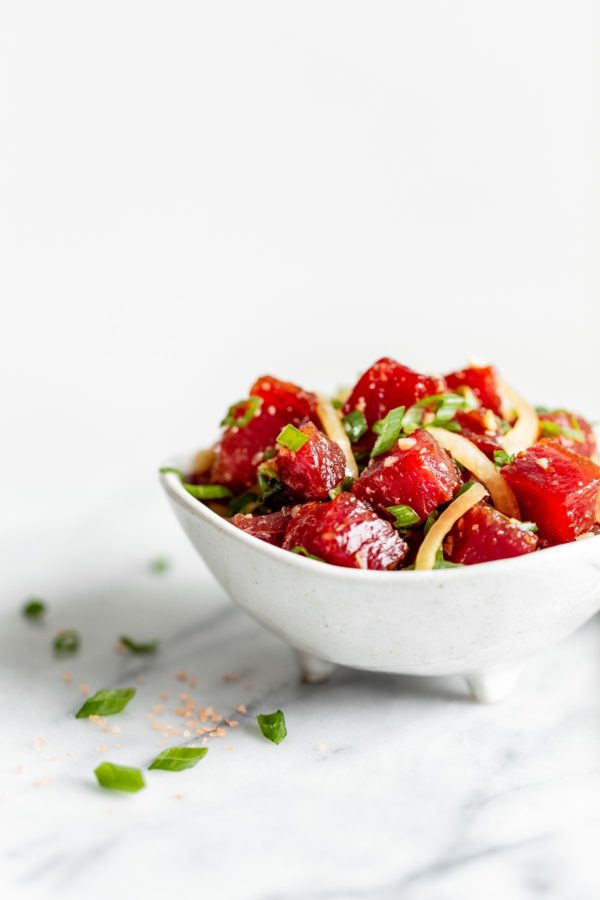
Mastering the Art of Making Ahi Poke at Home
Creating the perfect Ahi Poke at home is surprisingly straightforward, but a few key practices ensure the best results. Since this dish relies on raw tuna, it is absolutely essential to prepare and serve it just before consumption. This ensures optimal freshness, safety, and preserves the delicate texture of the fish. Planning for leftovers with raw fish is generally not recommended. Furthermore, ingredients like raw onion slices, chopped macadamia nuts, and scallions are at their peak texture and flavor when freshly prepared.
Step-by-Step Preparation Guide
For this preparation, you’ll want to meticulously slice the chilled sashimi-grade tuna into uniform 1-inch cubes. A crucial tip for cutting tuna (and most other meats) is to always slice against the grain. This technique helps to break down the muscle fibers, yielding a more tender bite and significantly improving the overall texture of your poke. Once cubed, the tuna is gently tossed with the aforementioned flavorful dressing and fresh aromatics, allowing the ingredients to meld beautifully.
Serving Suggestions for Your Perfect Poke Bowl
While Ahi Poke is undeniably delicious on its own, its full potential is often realized when served alongside a bed of perfectly steamed rice. I personally favor using a sticky sushi rice; its slightly firm yet yielding texture provides an excellent counterpoint to the tender tuna. A crucial note: ensure your rice is not hot when serving, as warmth can alter the texture and temperature of the raw fish. Room temperature or slightly cooled rice is ideal for creating a refreshing balance in your poke bowl. Beyond rice, consider serving your poke with crisp lettuce cups for a low-carb option, or with some avocado slices and cucumber for added creaminess and crunch.
Pro Tips for the Best Homemade Shoyu Ahi Poke
Achieve poke perfection every time with these valuable tips:
- Spice It Up (or Down): Feel free to adjust the amount of gochugaru to your personal preference. You can also substitute it with Aleppo pepper or finely crushed red pepper flakes for a similar, subtle heat.
- Salt Smarts: If Hawaiian ‘alaea salt is not readily available or if you prefer not to purchase it, a coarse sea salt like Pink Himalayan salt makes an excellent substitute. Remember that different types of salt have varying densities and salinity levels, so always start with a smaller portion when substituting and adjust to taste. It’s easier to add more salt than to fix an overly salty dish!
- Freshness is Key: As reiterated, the quality of your tuna is paramount. Buy it the day you plan to make and serve your poke.
- Chill Out: Keep your tuna and all ingredients chilled until just before mixing and serving. This maintains the integrity and safety of the raw fish.
- Gentle Hand: When combining the ingredients, toss them gently with your hands or a spoon. You want to coat the tuna, not mash it.
Reprinted with permission from Aloha Kitchen by Alana Kysar (Ten Speed Press, March 2019).
Frequently Asked Questions About Ahi Poke
Here are some common questions about making and enjoying Ahi Poke:
Can I use frozen tuna for poke?
Yes, you can use frozen tuna, but it must be “sashimi-grade” or “sushi-grade” and flash-frozen specifically for raw consumption. Ensure it’s thawed properly in the refrigerator before preparing. Freezing at home typically isn’t sufficient to kill parasites, so always buy commercially flash-frozen tuna if you’re not getting it fresh from a trusted fishmonger.
How long can I store poke?
Poke is best enjoyed immediately after preparation. Due to the raw fish, it should not be stored for extended periods. Consume within an hour or two of making, especially if it’s not kept thoroughly chilled. Avoid any leftovers for safety reasons.
What can I serve with my Shoyu Ahi Poke besides rice?
Beyond steamed short-grain rice, Shoyu Ahi Poke pairs wonderfully with a variety of sides. Consider serving it with crisp lettuce cups for a light and healthy option, taro chips or wonton crisps for added crunch, or alongside a simple cucumber salad. You can also add thinly sliced avocado, edamame, or thinly sliced radishes to your bowl for extra flavor and texture.
If you found as much delight in this recipe as we did (we absolutely adored it!), I wholeheartedly encourage you to explore Aloha Kitchen for an even deeper dive into the captivating world of beautiful Hawaiian recipes and culture!
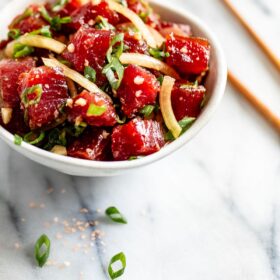
Shoyu Ahi Poke
Pin
Review
SaveSaved!
Ingredients
- 1 lb fresh sashimi-grade ahi steak chilled and cut into 1-inch cubes*
- 1½ tablespoons soy sauce plus more to taste
- 1 tablespoon sesame oil
- ¾ teaspoon Hawaiian salt (‘alaea) plus more to taste
- ¼ cup thinly sliced Maui or yellow onion
- ½ cup chopped green onions (green parts only)
- ⅛ teaspoon gochugaru (Korean red chili powder)
- 1 tablespoon finely chopped toasted macadamia nuts
- 2 cups steamed rice for serving
Instructions
-
In a bowl, combine the cubed ahi, soy sauce, sesame oil, salt, Maui (or yellow) onion, green onions, gochugaru, and toasted macadamia nuts and gently toss with your hands or a spoon. Adjust the seasoning to your liking.
-
Serve over rice and enjoy immediately.
Tips for Success:
- Feel free to substitute the gochugaru with Aleppo pepper or finely crushed red pepper flakes.
- If you don’t wish to purchase Hawaiian alea salt for this recipe, substitute with a coarse sea salt, such as Pink Himalayan. Please keep in mind that differnet kinds of salts have various densities – I advise starting with a small portion (if you’re substituting) and always seasoning to taste.
Reprinted with permission from Aloha Kitchen by Alana Kysar (Ten Speed Press, March 2019).
